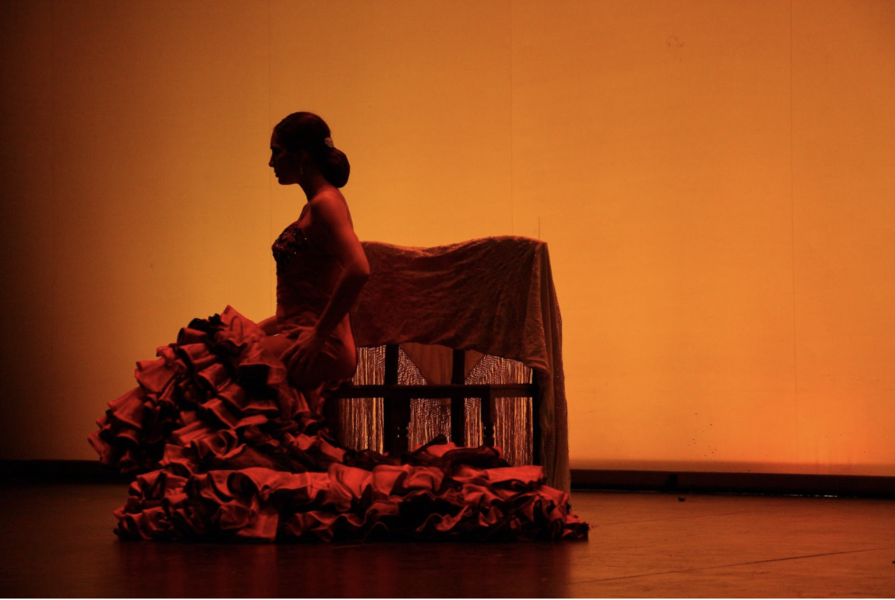Subscribe at https://www.linkedin.com/pulse/three-lessons-public-speaking-i-learned-from-flamenco-yiyang-hibner/

Author: Parul Goel
In 2018, I took some time off from work and spent a month in Spain. I traveled through Malaga, Cordoba and Barcelona eating jamon, drinking wine and soaking up the sun. During my trip,I had the opportunity to enjoy three Flamenco performances, one in each of the cities I had visited. Flamenco, for those of you who are new to it, is an art form that includes music, song and dance. You can watch this video on YouTube as a pretty good sample of what a Flamenco performance is like if you have not seen one.
The shows were very different in their settings and styles. The one in Malaga was held on a small stage in a basement with a small group of performers. In Cordoba, I enjoyed the performance under the stars on a warm evening. The scale was still smallish, but still bigger than the one I had been to in Malaga. In Barcelona, the venue was Palau de Música Catalana, a UNESCO World Heritage site and one of the most impressive concert halls I have ever been to. Everything about this performance was grand - the venue, the audience and the performing group.
All three performances were fascinating. I was enthralled by the soulful music and graceful dance movements. As an enthusiastic public speaker, I couldn't help drawing parallels between Flamenco performances and public speaking. An enjoyable flamenco performance felt similar to a highly engaged public speaking session; both draw you in by telling stories and evoking emotions. Here are three lessons from flamenco that we can apply to public speaking:
1. Passion stands out:
The setting and the costumes in Malaga were somewhat basic; still beautiful, but simple. In Cordoba and Barcelona, the costumes were elaborate and eye-catching. However, in the end, what mattered the most was the dancing itself. With our untrained eyes, most of us in the audience could not judge the performances on their technical aspects, but we could spot passion and joy. And those were the dancers who won our hearts and got the loudest applause, regardless of what they were wearing and where they were performing.
The same holds true of public speaking. You can have polished powerpoint slides and data to back everything you say, but what captures the audience is your conviction. The audience needs to be convinced that you care about the topic you are presenting on. So pick a topic that you are passionate about, then you would have won half the battle. At work, even if the presentation is technical in nature, personalize it by adding stories and your opinions. Opinions convey conviction, and in combination with the right facts, they will help you win over your audience. So whatever topic you are presenting on, make sure it represents your point of view authentically.
2. Cadence matters:
The show in Cordoba started on a rather low note and peaked about half way with a brilliant performance by a male dancer who took my breath away with his footwork. The audience went wild after his performance. Chorus of “bravos” went on for a while even after the performer had left the stage. Had the show ended with his performance, everyone would have gone home with this upbeat energy the performance had created. However, the show continued and the performances that came after it couldn't match this one. I could feel the energy in the room going down. The climax or the end of the show felt like a let down.
To avoid a similar fate, you need to remember two things. Firstly, you need a strong beginning so that the audience has enough incentive to continue engaging. And secondly, you need a strong ending so that the audience remembers you. Your conclusion is the last chance to leave an impression on the audience. Don’t waste it with “I hope you enjoyed my talk.” or a weak “thank you”. Instead, use your most passionate appeal - remind your audience why they should care, remind them what the world would look like if your idea was implemented. Bring everything you have to the conclusion of your speech.
3. Handle Disruptions with Grace:
During one of the performances, the manton (Spanish shawl) that the dancer was using got stuck in the flower in her hair. She continued her footwork while using her hands to disentangle the manton. Later on, her headgear became loose. Again, without losing a step, she took it off and threw it to the side of the stage.
I have yet to attend a conference that is free of issues. Invariably, the projector would stop working or the speaker would realize that the slides up there are not the final ones. This is when even the most inattentive audience wakes up eager to find out what happens next. As a speaker, how you handle the situation is now part of your presentation. The audience will remember you for fumbling or for firing through.
As a speaker, you owe it to yourself to be prepared for when things go wrong. Here are a few things to think about. Always have a copy of your slides on a flash disk. Be prepared to give your speech without the slides if necessary. Pause to let any disruptions pass. If you can, incorporate it in your presentation by making a joke about it. These disruptions are an opportunity for you to showcase your maturity and courage as a speaker. Don’t let them disrupt you. Instead, use them to your advantage.
What tips would you offer someone to be an effective public speaker? Share them with us in the comments.
(You can read the original, longer version of this article here.)
